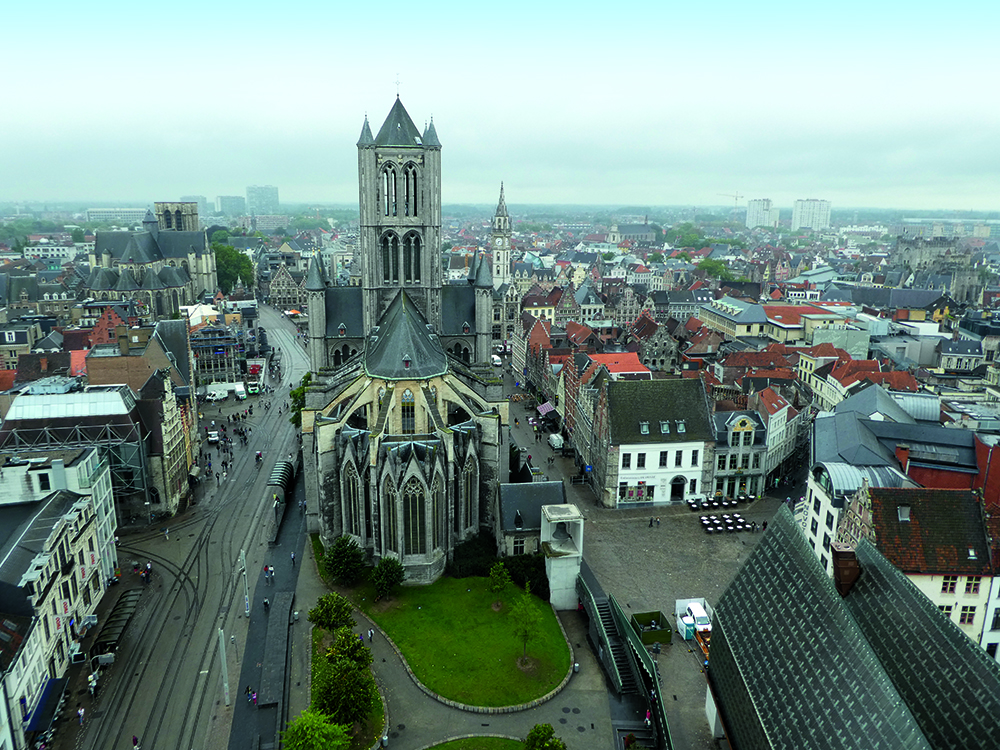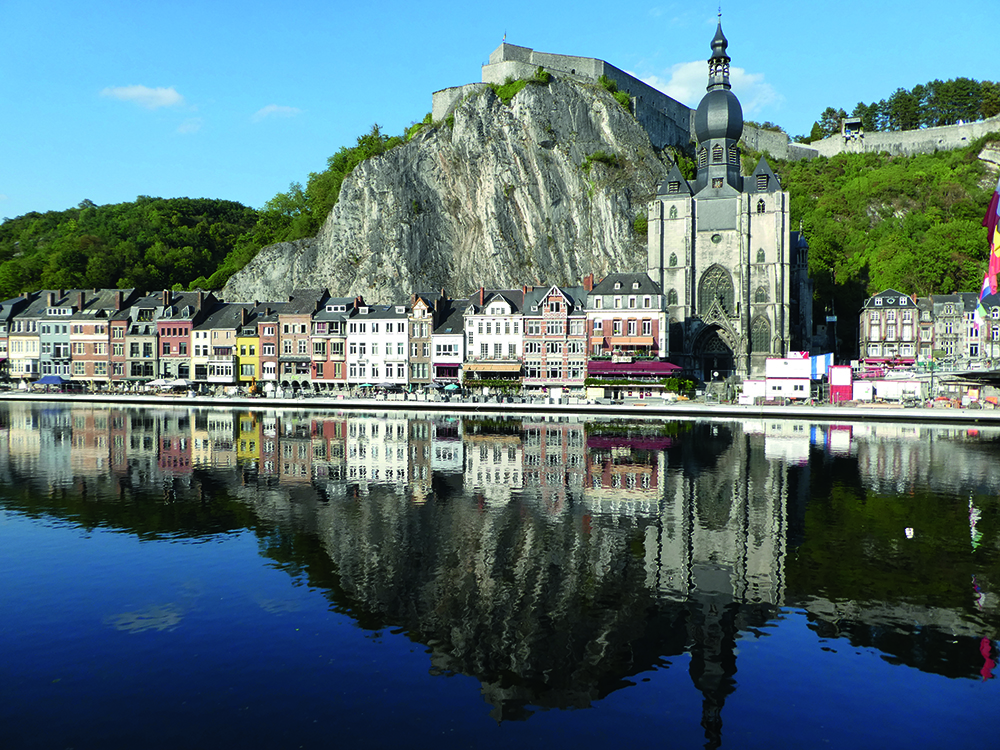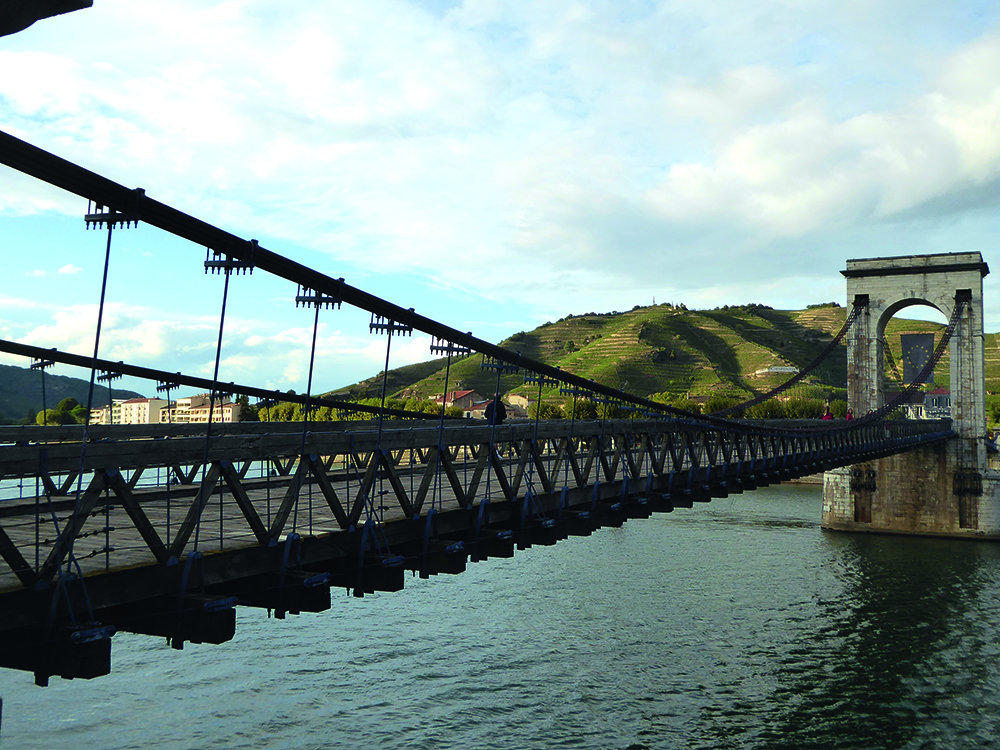Motorhome travel: France & Belgium
Driving through thick cloud and lashing rain, wondering if those occasional dark, indistinct lumps were the Alps, Robert Burns’ words, ‘The best-laid schemes o’ mice an’ men. Gang aft agley’ came to mind.

Our greatly anticipated first visit to Annecy partway through our tour of Belgium and France had ganged agley alright. We were heading further south in search of dry, warm and sunny weather. Roll back 10 days to the start of the trip. Our arrival in Europe coincided with the arrival of a hurricane and flooding in Texas where family and grandchildren live.
The first hot and sticky day on site in Ghent was spent on WiFi, monitoring events and worrying for their safety. In need of distraction, we caught the bus into Ghent, walking in rain around the city centre, taking in St Nicholas’ Church, St Bavo’s Cathedral and the ornate Unesco World Heritage-listed belfry, its huge carillon drum chiming the hour.
Next morning, under clear skies, we drove to the Cistercian Abbaye de Villers, but not before we had one of those unexpected moments. The sat-nav told us to take a right turn, which seemed a reasonable suggestion – but husband, Barry, groaned. This was not the way we were supposed to be going. I was smiling, as ahead was the Waterloo Memorial and battlefields. The iconic Lion’s Mound stood high and proud in the sunshine. This marks the location where a musket ball hit the shoulder of the Prince of Orange during the Battle of Waterloo in 1815, knocking him off his horse. The grand building at the foot of the mound houses a huge circular mural depicting scenes from the battle.
With an abiding interest in Cistercian abbeys, Villers was a new one for us, the first we’d visited in Belgium. We found a large parking area near the visitor centre and were impressed by interactive displays and information on monastic life. Villers claims to be the largest abbey ruins in Europe. The extensive site took quite a while to explore and was a good distraction from concerns about our family. Wandering through such scenic ruins has a calming effect; imagining monks and lay brothers going about their daily tasks in silence and contemplation put us firmly in the here and now.
The abbey fell into ruin in 1796 when it was sold to a builder’s merchant by the French Revolutionary administration, but it still attracted artists and tourists so, in 1893, restoration work began. Now, there is the formal garden, a café and art exhibits. A railway line bisects the site at the base of the steep wooded hill leading to a tiny chapel. We climbed up more flights of steps than I cared to count to see the viewing of the site from above.

Staying overnight by the Meuse in picturesque Dinant, we followed the river for part of the onward journey to Orval Abbey. Orval was founded in 1070 and became a Cistercian abbey in 1132. It’s a welcoming place with a peaceful atmosphere. Cooing doves greeted us on arrival. In its favour for Barry was Orval’s production of beer. The site is a mix of ruins and more modern architecture as the abbey has undergone several reincarnations over the centuries. The current buildings were completed in 1962, built to a traditional Cistercian style but with more than a nod to Art Deco. The new monastery is separate, but visitors can view this rather pristine building from a distance and join the monks at prayer (enquire at reception).
The brewery, however, was the highlight. Orval is famous for its traditionally brewed Trappist beer. Interactive videos explained the fermentation stages, the final one being in the bottle itself. To qualify as Trappist beer, brewing must take place in a Trappist/Cistercian abbey. The monastic community must be involved and revenue used for charity. Beer was regarded as liquid bread for monks; the process killed off harmful microbes in the water leaving the beer full of nutrient
We’d happened upon the Waterloo battlefields by chance, but had deliberately chosen to visit those at Verdun. Nearing the city, we saw numerous signposts to destroyed villages that had succumbed and were never rebuilt. Driving to the Verdun Memorial Museum, we began to appreciate the immense scale of the battlefields. The rolling high plain area is studded with monuments and grassed-over shell craters. We saw signs to the Forêt du Mort-Homme (Dead Man’s Wood) – a sobering start to the museum visit with its black interior décor. The tour is both educational and emotional, with powerful archive audiovisual displays and sound effects. The ever-present mud that soldiers from both sides fought in is included beneath glass walkways.

In need of something to counterbalance this sobering visit, we walked in sunshine from the campsite to the World Centre for Peace, in the Bishop’s Palace in Verdun. We pressed on south to Obernai close to the French/German border, still searching for distractions and there were plenty with cobbled streets and colourful half-timbered buildings.
Along the Route des Vins workers were busy in the vineyards. Red kites soared overhead and, slowly but surely, the Alps came into view. It was a sight that lifted our spirits as we headed for Thonon-les-Bains on the south side of the lake. Plan A had been to stay near Geneva, but research yielded no campsites in the area. Plan B was to stay on the lake and take a boat to Geneva. But, once we’d booked in at Camping Saint Disdille on the outskirts of Thonon, timetables showed no boats. Plan C was immediately invoked. Stay put, stop travelling and chill.
Saint-Disdille is a small lakeside village with a beach for swimming and launching boats, and pleasant views of the Alps across the lake. Château de Ripaille, once home to the Dukes of Savoy, is nearby and there is a park with woodland walks by the lake shore. The bus to Thonon stops outside the campsite, but we’d had enough of driving around in search of distractions. For us, the major local attraction was the Dranse Delta, adjacent to the campsite. The secluded delta, surrounded by trees, is home to a huge colony of cormorants. There must have been hundreds. Watching them from a two-tiered hide like a small grandstand provided an ever-changing tableau of avian activity.
We welcomed the news that flood waters in Houston had stabilised and the family was safe. At last we could relax! There followed a few lazy days watching the antics of the on-site red squirrels, walking by the lake and revisiting the cormorants. Heavy rain was forecast, so it was time to move. We headed south following the Route des Vins to Tournon-sur-Rhône where the air was clear and the mistral had us digging out warm fleeces before an early start next day. We were seeking the sun, not knowing where the journey would take us…
For more European motorhome travel inspiration, click here.






.jpg)


Recent Updates
Engine management lights: all you need to know
What is the engine management light? What does it mean, and what do I have to do? ...
Motorhome air suspension: all you need to know
Motorhomes are heavy and the additional weight of equipment and height of the bodywork can increase the loads ...
Motorhome WiFi: how to get better motorhome internet
Staying connected on the move is more and more essential, so relying on campsite WiFi isn't an option – here ...
A class of their own - our guide to A-class motorhomes
Thinking of trading up to an A-class, or even going straight to the top of the motorhome tree? We guide you ...
Explore overseas on a motorhome dream tour
Enjoy exotic travel in a campervan or motorhome by hiring, swapping with someone else or exporting your ...
Motorhome water systems: everything you need to know
On-board water is an important part of every motorhome – here’s everything you need to know ...
Campervanning in Europe: what you need to know
Whether you're planning a leisurely drive through the French countryside, navigating bustling city streets in ...
Campervan security: all you need to know
With thefts on the increase, it’s important to know how to keep your campervan secure and prevent campervan ...
Campervan furniture: everything you need to know
Our campervan experts guide you through all the essentials for your campervan, including tables, chairs, ...
Campervan finance: how to fund your purchase
Here we look at the different types of campervan finance available, to help you decide what’s the best option ...
Other Articles
Britain’s best used motorhomes
Want a great motorhome without paying the premium for a new one? Here's a guide to the best you can get in the pre-owned market for each layout, ...
Which motorhome? Choosing the perfect motorhome for you
Choosing a motorhome or campervan is one of the biggest buying decisions you’ll ever make, so it's important ...
Campervan washroom essentials: stay fresh on the road
Our guide will take you through the campervan washroom essentials you'll need so you're well-prepared for ...
Dogs in campervans: all you need to know
Follow our advice and your dog will enjoy campervanning as much as you do ...
Electric campervans: all you need to know
Our guide will take you through everything you need to know about electric campervans and what the future ...
Motorhome electrics: a complete guide to your motorhome electrical set-up
Motorhome electrics can dramatically enhance the convenience and comfort of your vehicle – but they can be ...
Lighting for campervans: all you need to know
We guide you through all the lighting options available for you and your campervan, including interior ...
Electric bikes for motorhomes: our ultimate guide
Read our comprehensive guide to electric bikes for motorhome owners, helping you add electric power to your ...
Our guide to 'cheap' motorhomes in 2024
If you're on the hunt for an affordable new motorhome, this is the best place to start – we've rounded up a ...
Campervans in winter: all you need to know
Here's your guide to preparing your campervan for the colder months, whether you will be using it or putting ...